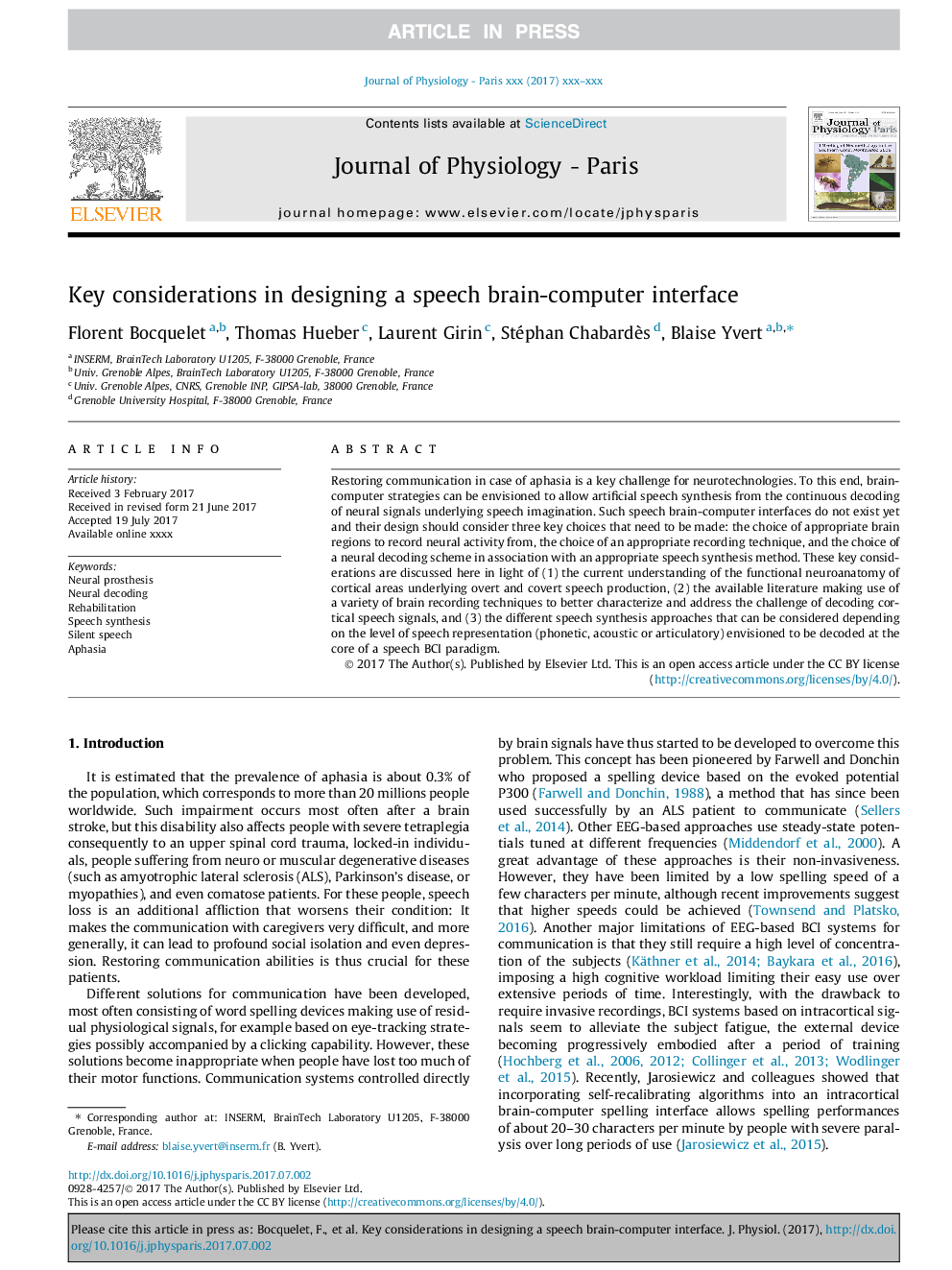| Article ID | Journal | Published Year | Pages | File Type |
|---|---|---|---|---|
| 5593256 | Journal of Physiology-Paris | 2016 | 10 Pages |
Abstract
Restoring communication in case of aphasia is a key challenge for neurotechnologies. To this end, brain-computer strategies can be envisioned to allow artificial speech synthesis from the continuous decoding of neural signals underlying speech imagination. Such speech brain-computer interfaces do not exist yet and their design should consider three key choices that need to be made: the choice of appropriate brain regions to record neural activity from, the choice of an appropriate recording technique, and the choice of a neural decoding scheme in association with an appropriate speech synthesis method. These key considerations are discussed here in light of (1) the current understanding of the functional neuroanatomy of cortical areas underlying overt and covert speech production, (2) the available literature making use of a variety of brain recording techniques to better characterize and address the challenge of decoding cortical speech signals, and (3) the different speech synthesis approaches that can be considered depending on the level of speech representation (phonetic, acoustic or articulatory) envisioned to be decoded at the core of a speech BCI paradigm.
Related Topics
Life Sciences
Biochemistry, Genetics and Molecular Biology
Physiology
Authors
Florent Bocquelet, Thomas Hueber, Laurent Girin, Stéphan Chabardès, Blaise Yvert,
